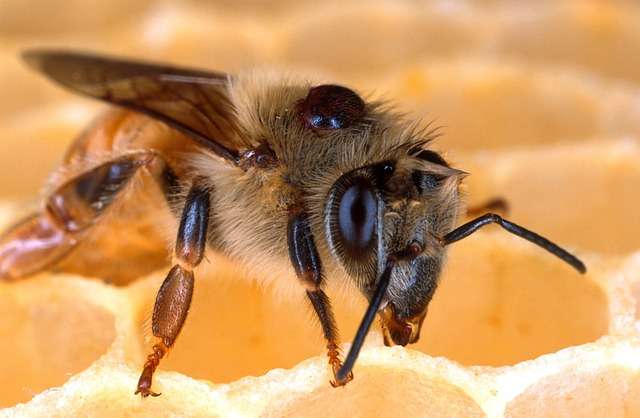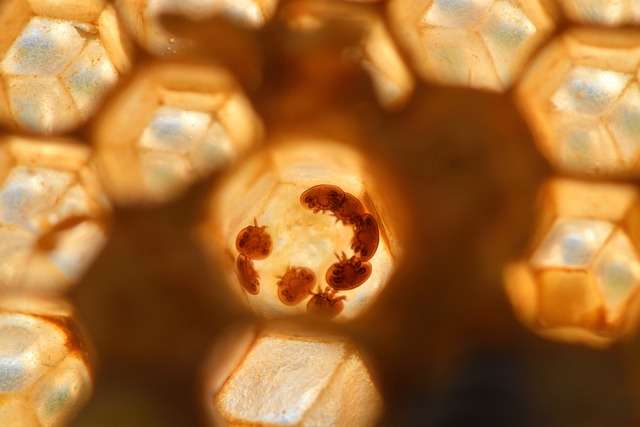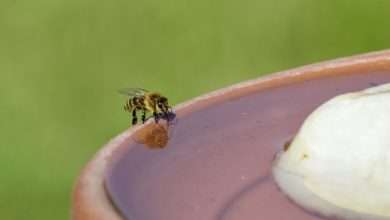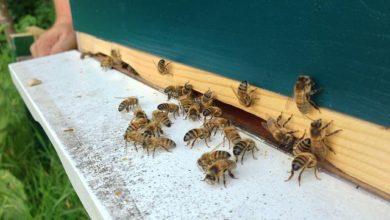Brood Break for Varroa Control

Should you use a brood break for varroa control?
For at least thirty years, the majority of Europe and North America have struggled with the severe problem of varroa mites affecting honey bees. Many beekeepers probably aren’t even aware that mites were to blame for colony fatalities, which frequently result from varroa and related infections.
The two stages of the Varroa destructor ectoparasitic mite’s life cycle are its main distinguishing characteristics. Reproduction occurs in the first location, which is the capped cell. The second occurs when the newly married female offspring mites mature while riding throughout the colony attached to a nursing bee, outside the capped cell.
The phoretic phase is a common name for this second stage.
Every mite in the colony needs to be “phoretic” during brood breaks.
In a hive, capped cells are often home to the majority of the mites. Up to 90% of the mites are connected to developing pupae, depending on the time of year, the queen’s egg-laying capacity, and other variables.
Yet when the number of eggs laid declines, an increasing number of mites are liberated from cells and become ‘phoretic,’ unable to locate a suitable late-stage larva to infest.
In dealing with varroa mites, certain bees do better than others. Honey bees that have been domesticated in Africa, particularly isolated groups of wild honey bees, and the original host Apis cerana all exhibit traits that help them to survive. The majority of honey bees managed by most beekeepers will die without any kind of intervention, it is a fact.
A recurring characteristic among bees that survive varroa infection without treatment is that they have very small colonies that swarm regularly. Not much help to beekeepers seeking honey, but I doubt the bees are very bothered by that. Swarming causes a brood break, which is a time when there are no young in the nest. Given that varroa mites reproduce in the brood, it makes it reasonable that their development would be hampered by the absence of a brood. Additionally, once the brood is gone, the mites are easy prey for an organic, extremely effective therapy called oxalic acid, which is naturally present in honey and doesn’t appear to be too harmful to bees.
Brood Break
The number of brood cells available for mite reproduction in a colony can be greatly impacted by a brood break.
Varroa reproduces while being safely shielded from grooming bees while they are in capped brood cells, which also serve as their haven. If you can establish a colony without any capped brood, the varroa cannot reproduce at that time, and the remaining mites in the hive are all phoretic (running loose) and have a higher likelihood of settling on the ground and being groomed by the bees. Due to the fact that they receive enough swarming-induced brood breaks to keep varroa numbers from ever reaching critical levels, many natural colonies (including colonies that are poorly managed) can thrive.

Pros:
- Exceptionally successful in preventing varroa reproduction
Cons:
- To schedule properly, you must be knowledgeable enough about bee biology.
When the colony is strong enough to handle the loss of workers or honey, or when there is enough time left in the season, when stopping the brood cycle is most effective.
How to break the brood cycle:
When it swarms, your colony may decide to employ this varroa management technique. By causing a swarm, placing the queen and capped bees into a nuc, and avoiding the phase where you climb the tree or clip them out of your neighbor’s soffit, you may accomplish this for them. The process of ending the brood cycle can take many different forms. Some beekeepers choose to just discard all of the nearly-capped and capped brood and use it in other hives (and deal with the mites appropriately). Others will remove the queen and the eggs for a while before reintroducing them. Making a nuc with the queen and letting the primary hive produce a new queen on its own is one simple method. The original colony will receive a break from having capped brood as they raise a queen, and the nuc will expand slowly (not having as much brood to build up a large population of varroa).
This method can slow the spread of varroa mites on its own or in conjunction with a chemical treatment.
It is possible for a brood break to reduce the strain of a dearth period while also giving the colony a young queen for the winter if it is timed correctly.
FAQ
What is brood break?
A brood break is designed to stop the queen from producing eggs, causing all of the eggs in the current brood to hatch. This puts the mites into the phoretic phase, where they are significantly more vulnerable to chemical treatments. The queen is typically put in a cage to stop her from laying eggs.
What is the best varroa mite treatment?
Treatment of Varroa Mites:
- Apistan Strips. Active Ingredient: Fluvalinate. Recommended Dosage: One strip for every five frames.
- Apiguard. Active Ingredient: Thymol. Recommended Dosage: Two treatments of one foil pack every two weeks. …
- Mite Away Quick Strips. Active Ingredient: Formic acid.
How to do a brood break?

The number of brood cells available for mite reproduction in a colony can be greatly impacted by a brood break. It is possible to achieve this break by either enclosing the queen in a cage for around three weeks (Scalvini cages are advised) or removing her from the colony altogether.
How long until brood is capped?
It is made by nurse bees and is a glittering, white substance called brood food. The grub is fed by nurse bees more than 1,000 times every day, and it consumes constantly. The cell is wax-capped after roughly 5.5–6 days. The larva spreads out and makes a cocoon of silk underneath that capping. A
What month do you treat varroa mites?
A lot of beekeepers like to treat mites in August and then once again in the dead of winter when there is minimal capped brood present. In particularly powerful colonies that looted other colonies in the fall, a second treatment in the winter may be very crucial.




